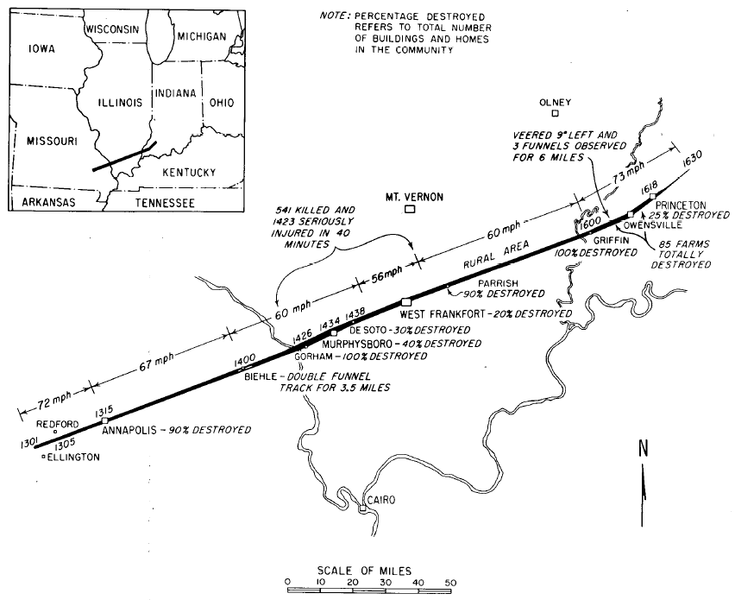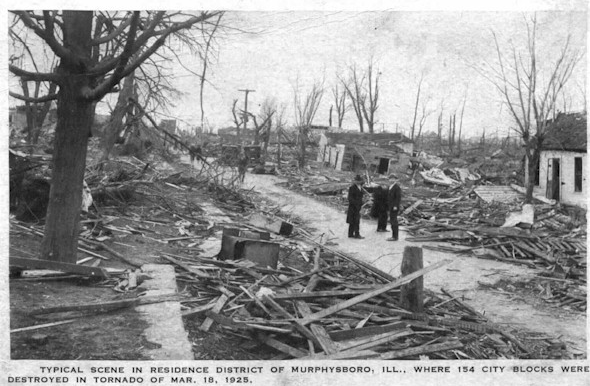One hundred years ago today, on March 18, 1925, one of the deadliest tornadoes in U.S. history carved a devastating path across Missouri, Illinois, and Indiana. Known as the Tri-State Tornado, this monster storm left nearly 700 people dead, injured 2,000 more, and obliterated entire towns along its record-breaking 219-mile track.

A Storm Like No Other
The morning of March 18 started ominously. A steady rain fell, the sky darkened, and the air felt heavy. By the afternoon, a massive tornado—estimated to be an EF5 by today’s standards—tore through communities with winds over 300 mph. In Murphysboro, Illinois, the hardest-hit town, 234 people perished, the highest tornado death toll for a single U.S. community.
Survivors recalled horrific scenes: homes ripped from their foundations, debris raining down like missiles, and fires breaking out amidst the wreckage. A baby was torn from its mother’s arms, livestock was hurled into buildings, and entire families were lost in the chaos. The St. Louis Post-Dispatch described it as “scenes of suffering and horror” with ambulances struggling to reach the wounded through streets filled with wreckage and flames lighting the night sky.

Then vs. Now: How Tornado Warnings Have Changed
In 1925, there was no advance warning system for tornadoes. Residents had no way to know what was coming, and the tornado struck with almost no warning. Today, thanks to advances by NOAA’s National Weather Service (NWS), tornado forecasting has drastically improved.
Key advancements include:
- Doppler radar: First introduced in the 1990s, it allows meteorologists to detect tornado formation earlier than ever.
- Storm Prediction Center: Issues tornado outlooks up to seven days in advance.
- Automated Surface Observing Systems & Satellites: Provide real-time data to track storms more accurately.
- Warning lead times: Today, tornado warnings provide an average of 20 minutes’ notice for EF-3+ tornadoes—compared to zero warning in 1925.
- 95% detection rate: The probability of detecting a tornado has drastically improved, giving communities time to prepare.
The Future: What’s Next for Tornado Prediction?
Looking ahead, the Radar Next program aims to deploy next-generation weather radars to replace aging NEXRAD systems. These improvements will provide even greater accuracy in tornado detection and lead times, further reducing fatalities from violent storms.
Honoring the Lives Lost
The Tri-State Tornado remains a stark reminder of nature’s power and the importance of weather preparedness. Thanks to a century of scientific advancements, tragedies of this scale are far less common today. But as any Coloradan knows, severe weather can strike quickly, making it essential to stay informed, have a safety plan, and heed tornado warnings when they arise.
As we remember the victims of 1925, we also recognize how far we’ve come in protecting lives from deadly tornadoes—and how much further we can go.
